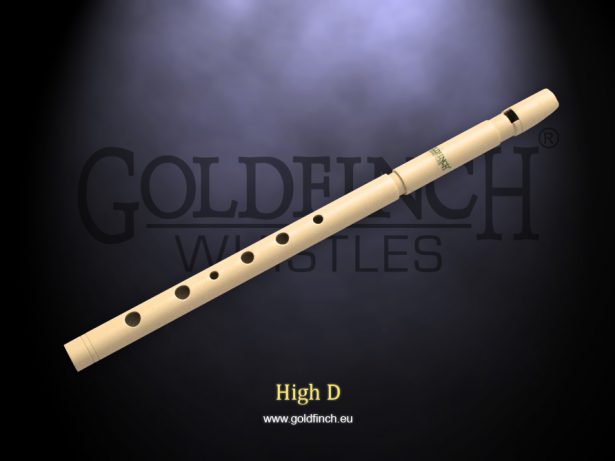High D Goldfinch Whistle
The High D was the first Goldfinch Whistles key ever made, years ago, and has been continuously improved since then. It is the most popular classic key for whistles, particularly for Irish Traditional Music. Most of the whistle learning materials available are focused on this key, so it is a perfect choice to start a musical adventure or simply move to a higher standard of hand-perfected whistles. We are very proud to have our High D Goldfinch Whistles being instruments of choice for amateur and professional musicians for sessions, stage performances, and recording purposes all around the world.
The High D registers loudness is moderate and balanced, with a rich, full tone from the solid lowest up to the highest notes. A light, decent backpressure and low air requirements allow for whistler-friendly playability up to E3 of the 3rd octave, comfortable breath control, articulation and subtle dynamics. This tin whistle is well suitable for both fast-paced acrobatic melodies and slow airs to reflect on. Furthermore, large fingerholes facilitate the half-holing techniques for anyone, who wishes to go beyond.
All in all, we do our best to make the High D Goldfinch Whistle a versatile and rewarding instrument you can always rely on.
Order process
1. Order
Ask about the whistles you would like to order
2. Details
Receive an e-mail with the total price, waiting time and payment details
3. Payment
Make the payment
4. Finalise
Receive new whistles




